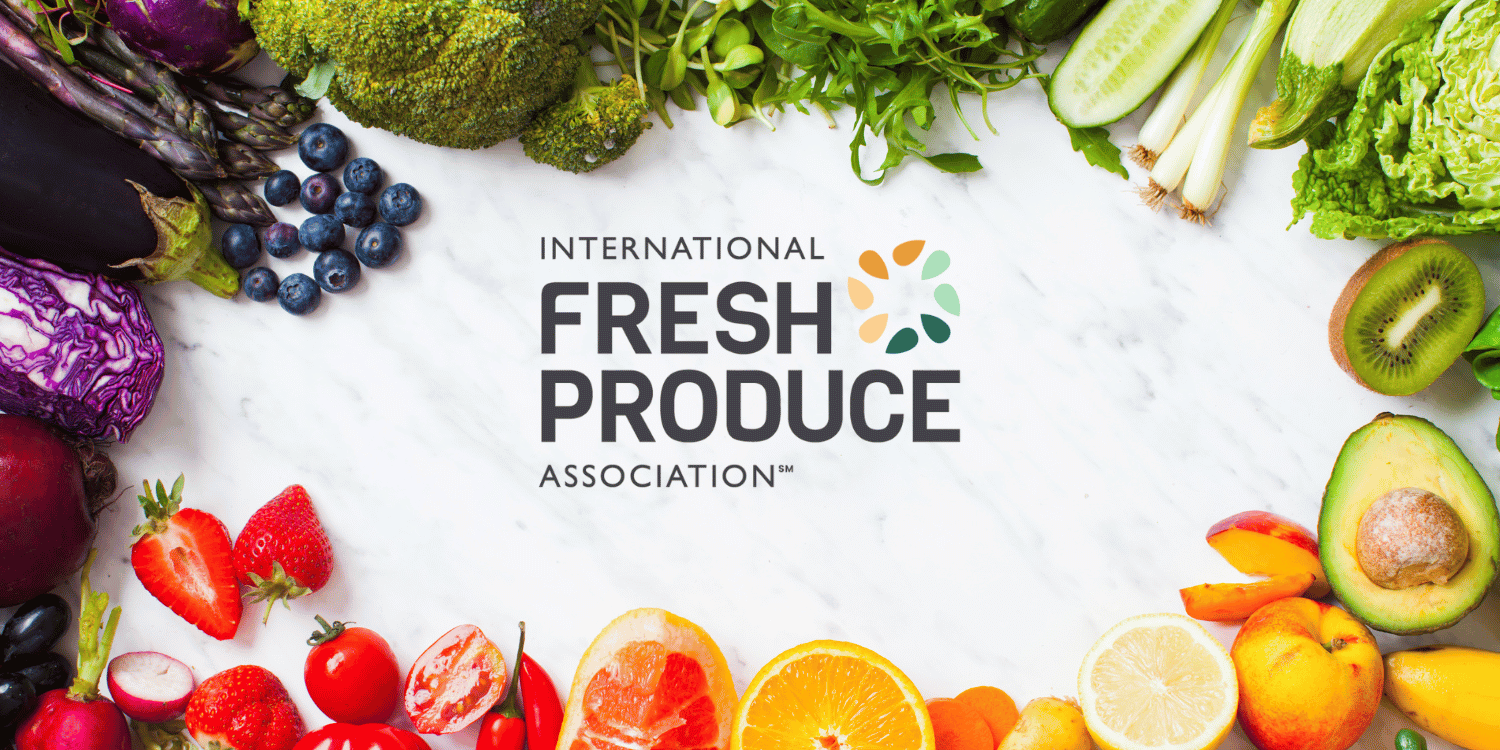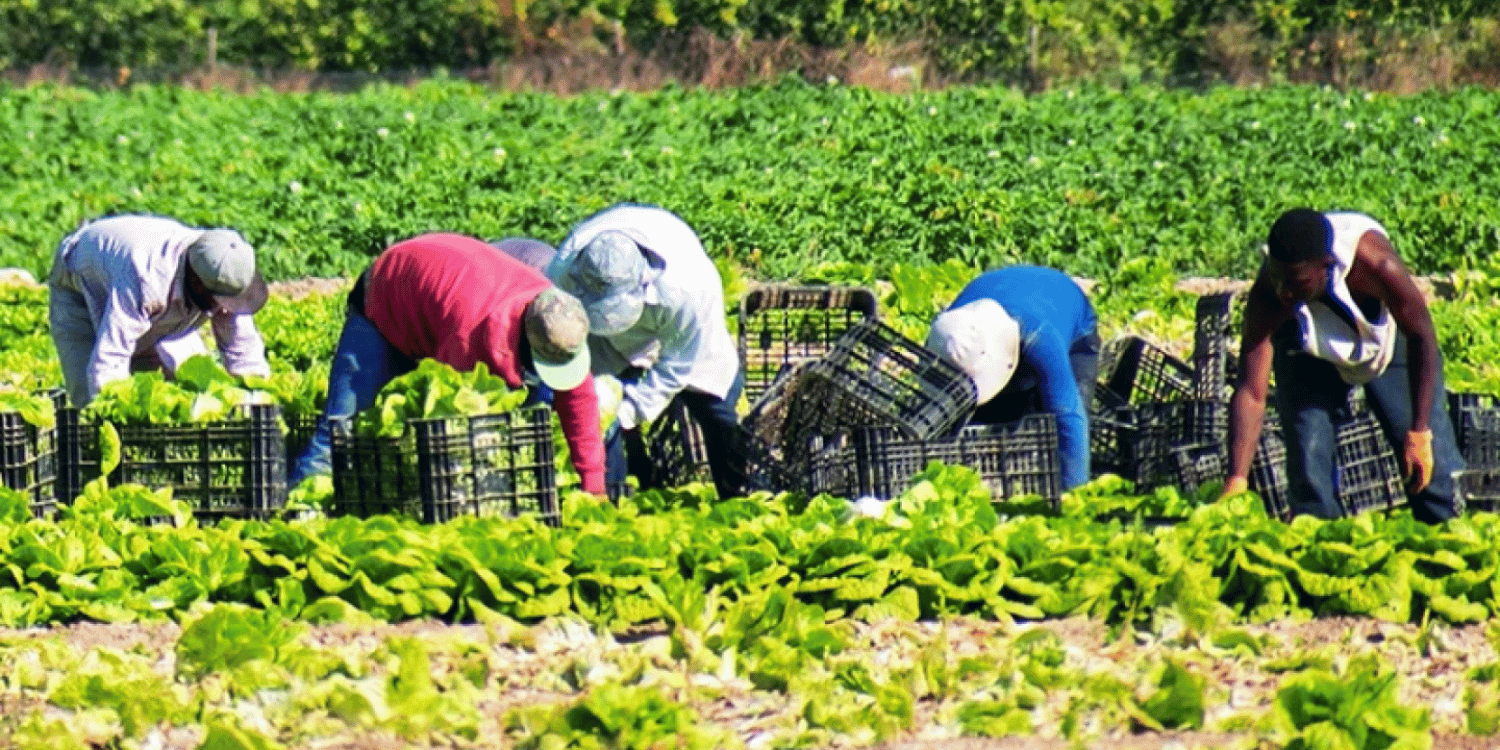With the emergence of a global economy, trading fresh produce internationally has become increasingly popular.
Yet, it’s not devoid of challenges that could derail your business.
While it can provide an avenue for accessing a wider market, each country has its unique laws and regulations.
In the fresh produce industry especially, quality control is paramount and can be difficult to maintain across borders.
Understanding these pitfalls, and how to navigate around them, is essential for successful international trade.
Considering both the potential profit and the probable pitfalls is an integral part of decision-making in this sector.
- Avoid ignoring local produce regulations in international trade.
- Inadequate quality control measures can lead to severe issues.
- Never neglect export license requirements in foreign markets.
- Overlooking product quality and safety standards can be detrimental.
- Mishandling of currency exchange rates can affect profitability.
Learning the major mishaps in international produce trade is crucial, and addressing these issues can ensure smoother transactions.
Yet, while the points above are important, they are not exhaustive.
In the following sections, we’ll be focusing on other important topics related to international trade of produce, including key strategies for effective negotiation, understanding the impact of macroeconomic factors such as political instability and trade sanctions, and ways to ensure effective communication with foreign trade partners.
These insights may be the difference between your success and failure in international produce trade, making it worthwhile to continue with this ground-breaking discussion.
Contents
- Pitfalls To Avoid In International Produce Trade
- 1. Ignoring local produce regulations
- 2. Inadequate recipient quality control measures
- 3. Neglecting export license requirements
- 4. Overlooking Product Quality and Safety Standards
- 5. Mishandling currency exchange rates
- 6. Underestimating transportation and logistics costs
- 7. Not Securing Reliable Supply Sources
- 8. Bypassing Effective Communication Channels
- 9. Undervaluing Cultural and Market Differences
- 10. Lacking Backup Plans for Supply Chain Disruptions
- The Bottom Line
Pitfalls To Avoid In International Produce Trade
1. Ignoring local produce regulations
In Short: Disregarding local produce regulations in international trade can lead to severe consequences, including fines or business shutdown. Understanding and complying with diverse agricultural laws, including quality standards and environmental stewardship, is vital for the legitimacy and longevity of the business.
On a global scale, international produce trade plays an integral part in tapping the potential market expansions and gathering a diverse range of products.
However, one crucial pitfall that some entrepreneurs uncertainly fall into is disregarding local produce regulations.
This might stem from a lack of thorough research or plain oversight.
It is important to understand that each region or country carries its distinctive set of rules and regulations when it comes to agriculture and farming produce.
Failure to adhere to these laws could lead to severe ramifications, including hefty fines, suspension of business activities, or even complete shutdown.
Local regulations pertain to several aspects of the trade, including but not limited to quality standards, safety regulations, pricing, packaging, and labeling procedures.
These rules help maintain the integrity of the industry and protect the welfare of consumers.
A good example would be, the European Union has stringent policies on Genetically Modified Organisms (GMOs) and many countries demand specific labeling for imported produce.
A common element in many of these local regulations are guidelines related to the following:
- The quality of seeds and nursery plants being used.
- Safety measures employed during farming.
- The use of pesticides and chemicals.
- Ensuring sensitive environmental stewardship.
Having a thorough understanding of these regulations and micro-managing each aspect can seem like an arduous task.
However, it is essential to the legitimacy of your business operations in the long run.
This is why businesses find it beneficial to consult with local agricultural consultants or hire personnel familiar with the regional legal framework.
Pooling resources in understanding these regulations will not only strengthen your business but also promote responsible and sustainable practices.
It is also crucial to stay updated on any changes in local agriculture and trade laws.
Regulations may evolve with various factors like changing government policies, environmental considerations, or public health issues.
Recognizing the importance of local produce regulations is a major stepping stone in avoiding common pitfalls in international produce trade.
I want you to remember, knowledge is power, and in this case, knowledge provides protection from potentially catastrophic business interruptions.
While compliance with local laws and regulations may seem daunting initially, it is essential for securing the longevity and legality of your business.
Failing to do so could lead to dire consequences, thus cultivating an understanding of local produce regulations is of paramount importance.
2. Inadequate recipient quality control measures
In Short: In international produce trade, lenient recipient quality control measures heighten the risk of compromised product quality, financial losses, reputational damage, and non-compliance with regulations. Embracing modern technology for advanced quality control and establishing robust measures are crucial to ensure safety, quality, and a competitive position in the international market.
In the context of international produce trade, inadequate recipient quality control measures pose significant challenges.
There’s a heightened risk of compromising the final product‘s quality when thorough inspections and controls aren’t strictly adhered to.
It goes without saying; the produce must meet the recipient country’s safety and quality standards.

In this context, being content with anything less than stringent recipient quality control can lead to dire consequences.
Ending up with defective or substandard produce not only disrupts market dynamics but also results in financial losses and reputational damage.
Moreover, inconsistent quality control measures often result in non-compliance with local or international regulations.
Let’s discuss a few potential consequences of not prioritizing recipient quality control in international produce trading:
- Fines and Legal Actions: Businesses could face heavy penalties and possible legal actions.
- Reduced Market Share: It can lead to an erosion of market share as consumers pivot to more reliable options.
- Increased Inspection: Non-compliance could result in increased scrutiny and inspection of shipments.
- Reputational Damage: Lastly, it can severely harm the company’s reputation and customer trust.
From the above points, it is clear that quality control isn’t an area to be overlooked or handled lightly.
Rather, progressive companies should leverage sophisticated technologies to advance their quality control measures.
Modern solutions like artificial intelligence, machine learning, and predictive analytics can provide the insight and automation necessary for effective quality control.
Furthermore, establishing clear standards, training staff, and investing in equipment are equally important parts of establishing robust recipient quality control measures.
Supermarkets and foodservice buyers often demand a consistent, year-round supply, which can only be met with a healthy commitment to recipient quality control.
As an international trader, it is crucial to equip your organisation with the right tools and practices to assure quality at every step of the supply chain.
Only by doing so can you assure consumers of the safety and quality of your produce, thereby reinforcing your position in an intensely competitive international market.
3. Neglecting export license requirements
In Short: Ignoring export license requirements can result in legal repercussions and harm business relationships and profitability. It’s vital for businesses engaging in international trade to understand and comply with export regulations of both exporting and importing countries, prevent potential legal trouble, and maintain responsible and ethical business practices.
When focusing on international trade, specifically within the context of produce, one cannot turn a blind eye towards the export license requirements.
Regulation and official mandates, especially when it comes to shipping organic matter across borders, are strict to ensure safety and quality control.
Without proper documentation in the form of an export license, businesses can face legal repercussions, prohibition from further trading, and sizable fines.
Countries introduce these licenses primarily to monitor and control the export of goods to ensure that everything aligns with their regulatory and economic policies.
Ignoring these requirements may lead to a plethora of consequences apart from the legal implications.
For instance, risk damaging relationships with trading partners, cause significant delays, and ultimately impact the profitability of your business.
It would be wise for any firm involved in international produce trade to fully grasp the complexities that surround the regulations and requirements from both the exporting and importing countries.
Here are a few steps to consider whilst moving forward with securing an export license:
- Identify the type of license: Depending on the nature of your goods, you may require a specific type of export license. Understanding this is the first step towards compliance.
- Understand the regulations: It’s crucial to familiarize yourself with the export regulations of both your country and the country to which you plan to export. This understanding could save you from falling into legal disputes.
- Consult professionals or hire a customs broker: If you have the budget, consider investing in professional help. Customs brokers understand the ins and outs of export licenses, saving you time, and ensuring you remain compliant.
The importance of securing an appropriate export license cannot be overstated.
When it comes to avoiding global trade pitfalls, it is imperative to stay updated with the regulations and adhere to them.
Being knowledgeable about changing trade policies and market trends, and how they affect your sector, is just as important as knowing how to navigate the technical aspects of international trade.
Pro Tip: Without proper documentation in the form of an export license, businesses can face legal repercussions, prohibition from further trading, and sizable fines.
Understanding, respecting, and following export license requirements will not only prevent potential legal trouble but will also cement your company’s reputation as a reliable and trustworthy trader.
Operating within legal boundaries also assures your partners of your commitment to responsible and ethical business practices, which can go a long way in securing and building meaningful trade relationships.
4. Overlooking Product Quality and Safety Standards
In Short: Failing to meet product quality and safety standards in international produce trade can lead to significant business losses, potential legal ramifications, damaged reputation, and consumer health risks. Businesses must consistently adhere to key international standards, not merely to avoid negative fallout, but also to differentiate their products in the market, add value, gain customer trust, and ensure overall business sustainability.
Within the scope of international produce trade, it is alarmingly easy to overlook the importance of product quality and safety standards.
This oversight is not just detrimental to business reputation, but it could also lead to significant business losses, legal repercussions, and, in some cases, threaten consumers’ health.
Product quality encapsulates various aspects including taste, aesthetic appeal, and nutrition content, all of which are pivotal in determining consumer acceptance and market success.

Meanwhile, safety benchmarks emphasize the importance of hygiene, contamination prevention, pesticide levels, and the control of harmful organisms.
By failing to conform to these quality and safety standards, businesses risk ruining relationships with buyers and potentially receiving fines or sanctions from governing bodies.
The following list exemplifies some key international product quality and safety standards that must not be overlooked when trading in the produce industry.
- International Organization for Standardization (ISO) standards
- Global Certification Scheme (Global GAP) standards
- U.S. Food and Drug Administration (FDA) regulatory standards
- Regulation (EC) No 852/2004 of The European Parliament on the Hygiene of Foodstuffs
- British Retail Consortium (BRC) Global Food Safety Standards
Traders not only need to secure certifications from these bodies but also ensure regular compliance through routine checks and quality assessments.
Furthermore, understanding and adhering to these standards isn’t just about avoiding negative consequences.
By dedicating attention and resources to these aspects, businesses can leverage their adherence as a differentiating point in the market, therefore adding value to their offerings.
More so, reliability in product quality and safety can boost customer trust, which is invaluable for businesses in such a competitive industry.
Pro Tip: Always prioritize and adhere to international product quality and safety standards such as ISO, FDA, and BRC, among others, to avoid legal repercussions, maintain customer trust, enhance your brand image, and ensure the sustainability of your business.
Additionally, effectively communicating this diligence on quality and safety can serve as part of a brand’s story, enhancing overall market appeal.
In the grand scheme of things, this diligence is not only a responsibility towards customers, but it also contributes significantly towards bolstering brand image, enhancing product differentiation, and ultimately, ensuring the sustainability and success of the business.
5. Mishandling currency exchange rates
In Short: Mismanagement of currency exchange rates can significantly impact the profitability of international produce trade. Being aware of exchange rate fluctuations, currency risk, unexpected costs, and utilizing strategic financial planning are crucial for successful trading.
When embarking on the journey of international produce trade, remembering the importance of currency exchange rates cannot be overstated.
Whether it’s purchasing goods from other countries or selling to foreign buyers, the value of currencies can significantly impact profitability.
While it might seem simple, the act of properly managing currency exchange must be handled with expert knowledge and an understanding of the global economy.
Fluctuating exchange rates can alter the cost of goods and services, meaning careful monitoring of rates can make an enormous difference in your bottom line.
In the international produce trade, dealing with different currencies can result in unforeseen expenses.
When converting currencies, exchange rate fees can cut into profits and increase transaction costs.
Many traders neglect to consider these fees when calculating their profits, leading to a miscalculation of their true earning.
Here are some important points to consider when dealing with currency exchange rates:
- Anticipate rate fluctuations: A small shift in rates can significantly impact the overall cost of an international transaction.
- Maintain constant vigilance: Keeping an eye on the international market, political stability, and global economic situations can provide cues to possible swings in exchange rates.
- Opt for secure payment methods: Currencies with volatile exchange rates can put international trade at risk. Opt for reliable payment methods such as Letters of Credit or Bank Guarantees.
Another challenge in managing currency exchange is the risk of currency devaluation.
When a currency devalues, the relative cost to purchase goods with that currency increases, which can drastically impact the trade equation.
This potential threat underscores the need for strategies to mitigate risks associated with currency fluctuations.
Lastly, it’s crucial to keep in mind the time factors involved in international trade.
The time between initiating a deal and the actual payment can be long, and during this period, exchange rates may change, affecting the ultimate cost of goods.
For this reason, traders should be proactive in negotiating terms that take these currency exchange rate fluctuations into account.
Overall, the mishandling of currency exchange rates can present significant obstacles to the success of any international produce trade venture.
Therefore, exerting substantial effort to understand, monitor, and effectively manage these rates, currency risk, and exchange costs, is essential for the longevity and profitability of the business.
By embracing these methods, and employing strategic financial planning, one can navigate the complex seas of international produce trade with greater confidence and success.
6. Underestimating transportation and logistics costs
In Short: Underestimating transportation and logistics costs in international produce trade may give rise to budgeting issues, reducing profit margins considerably. To avoid these financial strains, businesses should perform extensive research and planning, consider unexpected costs like customs duties, insurance, and container fees, and optimize logistics processes using advanced technologies.
Transportation and logistics costs serve as pivotal components in the international produce trade.
When businesses underestimate these costs, it can lead to budgeting issues and reduce the profit margins significantly.
Typically, in the realm of international produce trade, transporting goods from one country to another involves multiple modes of transportation and various checkpoints.

This not only adds complexity to the process but also brings along multiple possible cost-incuring points.
Estimation errors in these costs can, therefore, lead to severe financial strain.
In the international produce trade, several areas can lead to unexpected transportation and logistics costs. Let’s dig in into a few of these below:
- Customs duties and tariffs: Ignorance of applicable customs duties and tariffs can significantly increase transportation costs.
- Insurance: Insurance cost is almost always a part of international shipping. Failing to account for this can inflate logistics costs.
- Container fees: When shipping large amounts, companies have to pay for container usage. This cost can add up quickly if not accounted for.
- Fuel charges: Changes in fuel prices can cause fluctuations in transportation costs, especially when exporting over long distances.
- Logistical challenges: Issues like delays, unforeseen events, and mismanagement can lead to increased costs by affecting the efficiency of delivery.
It is also important to factor in the fragility of the goods that are being transported. Fresh produce, for example, requires appropriate storage conditions, increasing the cost of refrigeration during transportation.
Also, to maintain the quality of perishable goods, faster transportation modes are required which may escalate the costs further.
One of the methods to avoid underestimating the transportation costs is to do extensive research and planning.
Regularly updating your knowledge on foreign tax laws, keeping tabs on fuel prices, and choosing reliable transportation services can help keep the costs in check.
Important: Underestimating transportation and logistics costs in the international produce trade can lead to severe budgeting issues and significantly reduced profit margins due to multiple cost-incuring points, including customs duties, insurance, container fees, fuel charges, logistical challenges, and the need for specific storage conditions and faster transportation for perishable goods.
Moreover, trade businesses can also employ advanced technologies to improve efficiency, reduce errors and optimize logistics processes.
In the end, understanding the importance and extent of transportation and logistics costs in the international produce trade can be a game changer. Gaining a good grasp of logistics costs can contribute to more accurate budgeting, better financial planning, and ultimately the overall profitability of your international trade business.
7. Not Securing Reliable Supply Sources
In Short: Not securing reliable supply sources in international produce trade can halt operations, leading to financial loss and hurt competitiveness. To mitigate this, businesses should establish strong supplier relationships, ensure fair dealings, and develop robust contingency plans.
When it comes to international produce trade, one of the most critical mistakes a trader can make is not securing reliable supply sources.
Without dependable sources of produce, business operations can come to an abrupt halt, leading to lost trading opportunities and revenue.
This primarily stems from the unpredictable nature of agricultural production, which is often subject to variations in weather, disease outbreaks, and other unforeseen disruptions.
For traders, the implications are twofold: first, it can result in a lack of adequate or quality produce, and second, it can lead to considerable fluctuations in market prices.
Both scenarios can put the business in a precarious position, undermining its competitive edge in the global market.
The importance of establishing strong relationships with reliable suppliers cannot be overstated.
These relationships form the backbone of steady and predictable supply chains, cushioning businesses against the volatile nature of agricultural trade.
Now, let’s consider some strategies that can help businesses secure reliable supply sources in the international produce industry.
- Thoroughly research potential suppliers to ensure they have a track record of reliability and high-quality produce.
- Engage in fair and transparent dealing to foster strong, long-term relationships with suppliers.
- Develop a robust contingency plan to safeguard operations against unexpected interruptions in supply.
Through meticulous research and fair dealings, traders can identify suppliers who are consistent, trustworthy, and committed to meeting high-quality standards.
Such avenues foster a sense of mutual respect and trust with suppliers, which is crucial in establishing long-term sourcing relationships.
However, even with the most reliable supplier networks in place, global trade is fraught with uncertainty.
This is where a well-conceived, robust contingency plan comes into play.
Such a plan should detail alternative sources of supply and procedures for sourcing produce swiftly in case of disruptions, providing a safety net for businesses to prevent potential financial loss.
Simply put, a lapse in securing reliable supply sources is a misstep that no trader can afford in the high-risk terrain of international produce trade.
To remain competitive, businesses must prioritize establishing substantial supplier networks and equip themselves with contingency plans to navigate the unpredictable waves of global trade.
8. Bypassing Effective Communication Channels
In Short: Effective communication channels are crucial in international produce trade, with neglect often leading to misunderstandings and financial losses. Businesses should employ a robust communication system, encompassing emails, video calls, and social media to ensure clear information exchange, build trust, promote transparency, and maintain healthy relationships.
The role of effective communication channels is imperative in the operation of international produce trade.
One of the common oversights businesses make when venturing into the international market is neglecting these channels.
Critical information including contracts, terms, and conditions, compliance standards, and on-time payment requirements often get lost in translation due to ineffective communication.

Consequently, this could lead to misunderstandings, poor coordination, and substantial financial losses.
Therefore, it’s crucial to recognize the value of reliable communication in this industry.
International trading involves liaison with suppliers, customers, regulatory bodies, and other stakeholders across different time zones and languages.
Thus it emphasizes the need for a robust and responsive communication system.
Part of the discussion in a well-defined communication protocol involve various aspects.
One of them is the timeliness of responses.
Immediate response to queries, complaints, and other concerns is a must to avoid unnecessary delays and to build trust among stakeholders.
Another pertains to the resolution of language barriers.
This could involve incorporating multi-lingual staff or utilizing accurate translation tools ensuring clear, concise, and comprehensible communication.
Now let’s dig in into the type of communication channels commonly used in this industry.
- Emails – This allows asynchronous communication which is convenient for stakeholders in different time zones. It also provides a written record of correspondences.
- Video calls and meetings – This fosters real-time dialogue and visual cues in understanding the business at stake.
- Social media and websites – These platforms provide necessary information and updates about the company, products, services, and market trends.
It’s important to note that leveraging these channels is not only about enhancing the process of transactions.
It’s equally important to promote transparency and maintain healthy relationships within the network.
Moreover, it’s fundamentally about ensuring that all parties involved are on the same page, working towards the same objectives.
Indeed, disregarding effective communication channels could significantly impede the flow of international trade.
Hence, a committed effort to maintain these channels functional and efficient is a business strategy worth investing in.
9. Undervaluing Cultural and Market Differences
In Short: In the international produce trade, acknowledging and understanding cultural and market differences, such as color symbolism, consumer behavior, and local traditions, is crucial to business success. Failing to appreciate these unique attributes can lead to miscommunication, strained relationships, and missed opportunities in this highly competitive market.
The global produce market is a composite of diverse cultures, behaviors, and trends tailoring each customer base. To some degree, each is significantly different from the other. Consequently, it’s crucial to invest time into understanding your prospective destinations’ culture when participating in international produce trade.
Ignoring the cultural differences can lead to numerous misunderstandings and repercussions in trade dealings.
For instance, take color symbolism, a factor which varies from one culture to another.
In China, the color red symbolizes luck, while in some African cultures, it is often associated with death and mourning.
Recognizing these nuances can make the difference between success and failure when exporting produce internationally.
Similarly, market demands and consumer preferences vary across different regions. What may be a popular product in one region may not necessarily translate to another.
This section will dig in into a few crucial considerations that can make a difference in navigating the complex terrain of international produce trading:
- Respecting local traditions and customs: Sourcing locally and respecting the communities you trade with can serve as a nod of respect to their customs and traditions.
- Understanding preferences: To identify market opportunities, traders must appreciate the nuances in taste and quality expectations of different regions.
- Consumer behavior: Shopping habits vary based on numerous factors, including income levels, culture, and societal norms. For instance, considering the trend of organic or genetically modified produce can help identify market demand.
One can use these insights to adapt their products and promotional strategies to reflect local demands and preferences.
Market differences also extend to business operations, such as regulatory policies and frameworks.
Dealing with different jurisdictions requires meticulous planning and requires a deep understanding of the respective market’s regulatory landscape.
However, the task of negotiating these cultural and market differences is monumental. Trade participants should consider collaborating with local experts who have a finger on the pulse of these differences.
These local experts play a crucial role in offering region-specific insights that can guide business decisions and strategic planning effectively.
Local insight can influence crucial decisions, from packaging and marketing to distribution channels.
In the international produce trade, lack of appreciation for the unique attributes of each market can have significant consequences.
The underestimation of the importance of cultural and market differences can cause bad impressions, harm relationships, and lead to lost opportunities.
Pro Tip: To thrive in the international produce trade, it’s imperative to respect local traditions, understand consumer preferences and behaviors, as well as acknowledging regulatory policies and frameworks; recognizing that a one-size-fits-all approach does not apply in this diverse global market.
The international produce market is highly competitive with minimal space for error. Companies must understand and value the role cultural and market differences play in successfully navigating this landscape.
To sum up, we must acknowledge that a one-size-fits-all approach doesn’t work in the international produce trade.
The consideration of cultural and market differences is a critical factor whose importance cannot be underestimated would be an essential part of thriving in the business.
10. Lacking Backup Plans for Supply Chain Disruptions
In Short: In international produce trade, the importance of having robust backup plans for possible supply chain disruptions cannot be overstated. Successful traders anticipate disruptions from natural calamities, political instability, new competition, currency fluctuations, logistic errors, and communication breakdowns, while proactively establishing contingency plans, diversifying supply sources, leveraging analytics and real-time tracking technology, protecting themselves financially, and cultivating clear crisis communication strategies.
In the dynamic world of international produce trade, unexpected disturbances are not an if, but a when.
Lacking a solid backup plan for inevitable supply chain disruptions is a colossal oversight and a pitfall that can not only lead to a heavy economic toll but also cause serious damage to a trader’s reputation.
Like the game of chess, successful trading requires meticulous planning for a variety of potential scenarios.
First and foremost, it is essential to consider the intrinsic volatility of the produce market.
For instance, natural calamities such as floods, droughts, and insect plagues can rapidly turn a plentiful harvest into a supply nightmare.
The following are some proactive measures that can be implemented:
- Establish contingency plans for each primary component of the supply chain.
- Have multiple supply sources.
- Utilize sophisticated predictive analytics and Real-time tracking technologies to foresee and manage supply chain risks.
Another common disruptor is political instability.
Countries embroiled in political or social unrest, trade wars, or sudden regulatory changes could majorly affect accessibility to particular markets and commodities.
Next, the introduction of new competition or unexpected technological advancements should always be anticipated in the long-term planning process.
Finally, currency exchange rates can alter unpredictably, causing a sharp increase in logistics costs, thus significantly affecting the end-price in the target market.
Having a reliable financial hedging strategy can shield traders from excessive losses during such monetary fluctuations.
Furthermore, logistical mishaps such as transportation delays, shipping errors, or customs clearance backlog can create significant downstream ramifications.
There’s no understating the importance of having a firm backup plan that includes alternative shipment methods or routes, together with trusted logistics partners who can swiftly and effectively handle any arising challenges.
Finally, communication breakdowns can lead to disastrous misunderstandings, resulting in financial lose random avoidable inefficiencies.
Having a clear crisis communication strategy that includes efficient coordination between all parties involved is crucial.
All in all, anticipating potential supply chain disruptions and preparing a backup plan is a hallmark of successful international produce traders.
The Bottom Line
The global produce trade is filled with both opportunities and challenges.
The complexities surrounding customs, tariffs, regulations, quality control, logistics, and unpredictable market changes can severely impact businesses if not navigated carefully.
Similarly, without clear and transparent communication, varying cultural expectations, and ethical standards, relationships with trade partners can be compromised.
Yet, by being mindful of these potential pitfalls, and employing strategic planning and management, businesses can not only flourish but also make significant contributions to global economic growth and food security.
Therefore, keen attention must be paid to these factors to ensure a successful venture in international produce trade.




















